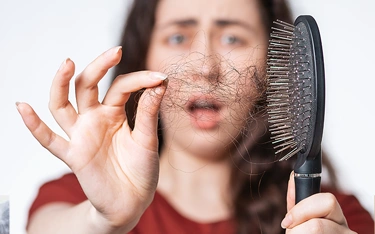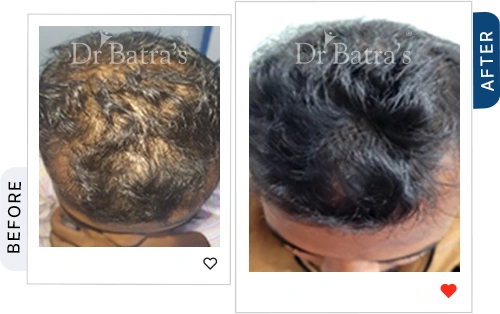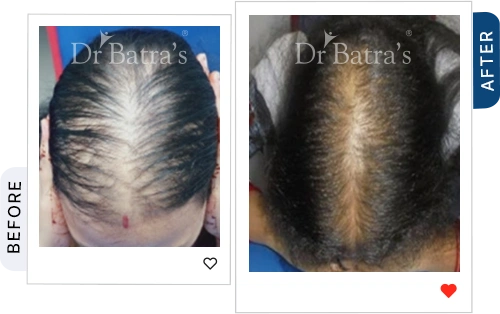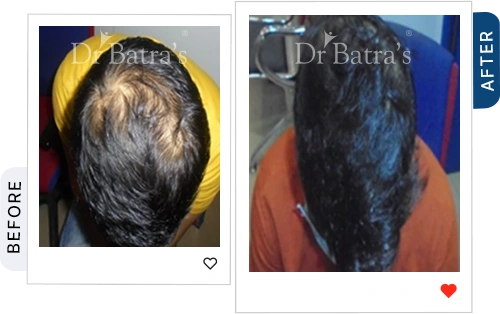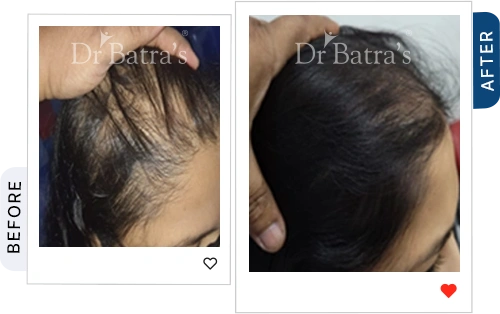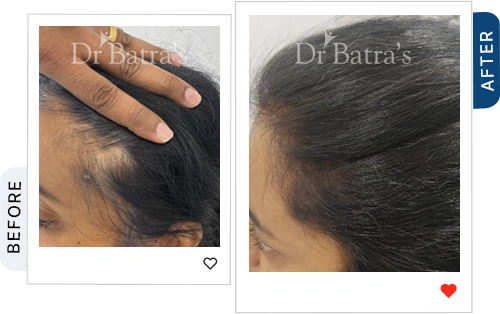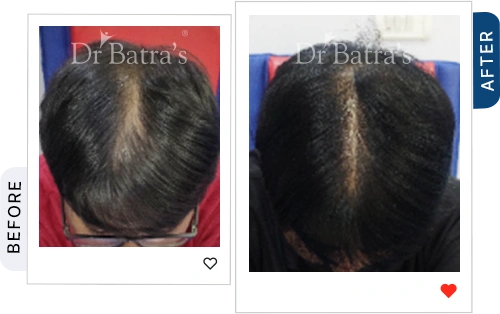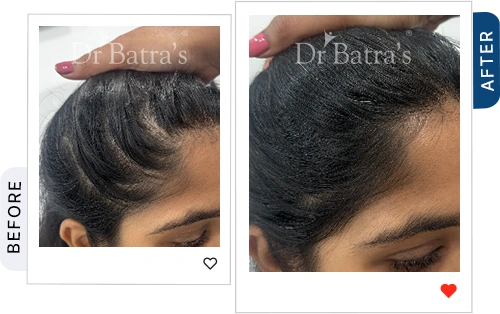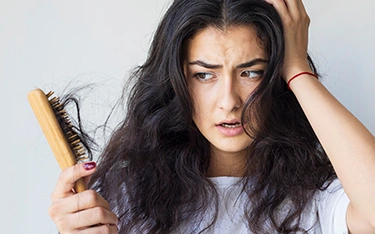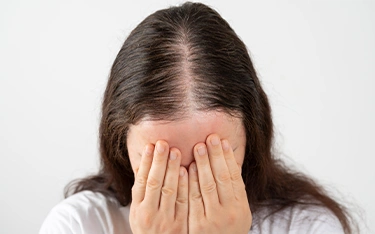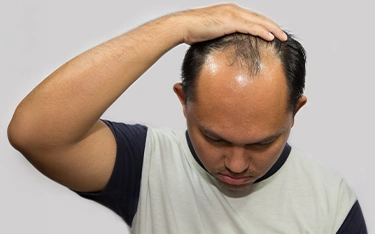FAQs
Androgenetic alopecia, also called pattern baldness, is the most common hair loss type. It is hereditary and causes gradual thinning in specific patterns, like receding hairlines in men or widening parts in women.
Stress-induced hair loss, known as telogen effluvium, is usually temporary. However, if the underlying stress isn’t managed, it can become long-term and worsen over time, especially when combined with other factors like poor diet or hormonal imbalance.
Alopecia areata often causes sudden, round bald patches on the scalp or body. It’s an autoimmune condition, and diagnosis is confirmed by a dermatologist through clinical examination and sometimes a scalp biopsy.
Homeopathy offers a personalised approach by treating the root cause of hair loss—be it stress, hormones, or immunity. While results vary by individual and hair loss type, it is safe, natural, and suitable for long-term use.
Hair grows in three stages: anagen (growth phase), catagen (transition), and telogen (resting/shedding). After telogen, a new hair begins the cycle. Disruption in any stage can lead to noticeable hair fall or thinning.
Traction alopecia is caused by frequent tension on the hair due to tight hairstyles like braids, buns, or ponytails. Over time, this constant pulling damages follicles and may lead to permanent hair loss if not corrected early.
Pattern hair loss is medically known as androgenic alopecia. It’s a genetic condition that leads to progressive thinning of hair, especially at the crown, temples, or parting line, affecting both men and women.
Androgenic alopecia, also called pattern baldness, is a common hereditary hair loss condition. It results in gradual thinning due to sensitivity to androgens (male hormones), often following a predictable pattern over time.
A dermatologist can help identify your hair loss type by examining the scalp, reviewing your medical history, and conducting tests like trichoscopy or blood work. This allows for personalised and accurate treatment recommendations.
Stage 2 baldness cannot be fully reversed, but early treatment can slow hair loss and stimulate regrowth. Options include Minoxidil, Finasteride, homeopathy, and lifestyle changes. Timely intervention is key for best results.
Shedding more than 100 hairs per day or noticing visible scalp thinning may be excessive. It can result from stress, hormonal changes, poor nutrition, or medical conditions. A professional evaluation is essential for proper diagnosis.
